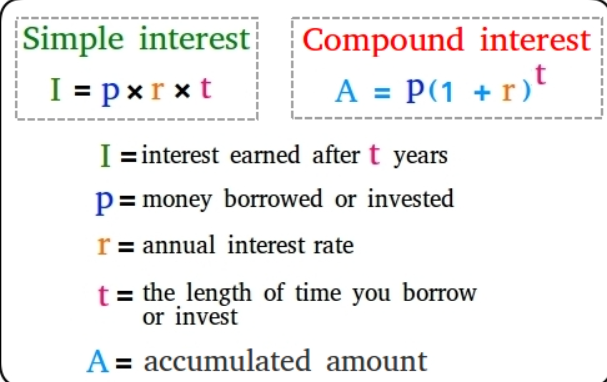Understanding the Differences Between Elastic and Inelastic Collision
Collisions, which are common physical events, occur when two or more objects come into contact with each other. They apply forces to each other, often transferring energy. Elastic and inelastic collisions represent two major areas in physics. Physics students, engineers, and anyone interested in the dynamics of moving objects must understand the differences between these types of collisions. This article aims to provide a detailed explanation of elastic and inelastic collisions, covering their definitions, main features, mathematical foundations, practical applications, and significance in various fields.
What Is an Elastic Collision?
When both kinetic energy and momentum are preserved, the collision is elastic. This means that, assuming no external forces act on the system, the total momentum and kinetic energy remain unchanged during the collision.
Simply put, an elastic collision involves no energy loss, and the objects bounce off one another. Although the objects may experience temporary deformation during the impact, they return to their original shape after the collision. A key characteristic of elastic collisions is the absence of energy loss.
Key Features of Elastic Collisions
Conservation of Momentum: In elastic collisions, momentum is always conserved. This follows from Newton’s Third Law of Motion, which states that for every action, there is an equal and opposite reaction. The overall momentum before and after the collision remains unchanged.
Kinetic Energy Conservation: The total kinetic energy of the system—i.e., the sum of the kinetic energies of all objects involved—remains constant in elastic collisions. This feature differentiates elastic collisions from inelastic ones, where kinetic energy is not preserved.
Idealisation: It is important to note that perfectly elastic collisions are idealised scenarios. Most real-world collisions result in some energy loss, often as heat, sound, or deformation. However, certain interactions, such as collisions between atoms or very hard objects, may closely resemble elastic collisions.
Mathematical Representation of Elastic Collisions
To gain a better understanding, let’s examine the mathematics of elastic collisions. Consider a one-dimensional elastic collision between two objects. The following expressions represent the conservation of momentum and kinetic energy:
Preservation of Momentum:
1 𝑢₁ + 𝑚₂ 𝑢₂ = 𝑚₁ 𝑣₁ + 𝑚₂ 𝑣₂
Where:
The masses of the two objects are denoted by m₁ and m₂, their initial velocities by u₁ and u₂, and their final velocities after the collision by v₁ and v₂.
Kinetic Energy Conservation:
1/2 𝑚₁ 𝑢₁² + 1/2 𝑚₂ 𝑢₂² = 1/2 𝑚₁ 𝑣₁² + 1/2 𝑚₂ 𝑣₂²
This equation reflects the ideal characteristics of elastic collisions, ensuring that the total kinetic energy before the collision is equal to the total kinetic energy after the collision.
What Is an Inelastic Collision?
In contrast to elastic collisions, inelastic collisions occur when kinetic energy is not preserved, although momentum is. In an inelastic collision, some kinetic energy is converted into other forms of energy, such as heat, sound, or internal energy. Perfectly inelastic collisions can happen in real-life scenarios when the objects involved stick together after the impact.
In inelastic collisions, the objects may not return to their original shape and may undergo irreversible deformation. As a result of the kinetic energy loss, the total energy of the system is no longer entirely kinetic after the collision.
Key Features of Inelastic Collisions
Conservation of Momentum: The conservation of momentum principle applies to inelastic collisions just as it does to elastic collisions. Although some energy is lost during the impact, the overall momentum before and after the collision remains unchanged.
Kinetic Energy Loss: The most significant feature of inelastic collisions is the loss of kinetic energy. The kinetic energy before the collision is greater than the kinetic energy after the collision, even though momentum is conserved. This energy differential is transformed into other forms, such as heat, sound, or deformation energy.
Deformation: Objects involved in inelastic collisions often experience permanent deformation. Depending on the materials involved, this deformation can include crumpling, bending, or breaking. The greater the energy loss as deformation, the more inelastic the collision.
Perfectly Inelastic Collisions: In a perfectly inelastic collision, the objects move as a single unit and stick together after contact. This results in the greatest loss of kinetic energy.
Mathematical Representation of Inelastic Collisions
In an inelastic collision, kinetic energy is not conserved, but momentum is. The same equations used for elastic collisions apply to the conservation of momentum:
1 𝑢₁ + 𝑚₂ 𝑢₂ = 𝑚₁ 𝑣₁ + 𝑚₂ 𝑣₂
However, unlike elastic collisions, there is no separate equation for the conservation of kinetic energy, as energy is dissipated in non-mechanical forms such as heat or sound.
If a collision is perfectly inelastic and the objects stick together, their final velocities are the same. The equation for momentum conservation can be simplified to:
𝑚₁ 𝑢₁ + 𝑚₂ 𝑢₂ = (𝑚₁ + 𝑚₂) 𝑣ₓ
Where:
The combined mass’s final velocity after impact is denoted by 𝑣ₓ.
Elastic vs. Inelastic Collisions: Key Differences
While both elastic and inelastic collisions are fundamental concepts in physics, they differ significantly in several key areas. Understanding these differences is crucial for solving problems in thermodynamics and mechanics.
Comparison of Kinetic Energy
- Elastic Collisions: Elastic collisions conserve the total kinetic energy.
- Inelastic Collisions: Kinetic energy is not conserved in inelastic collisions. Some of it is converted into other forms of energy, such as heat or sound.
Deformation in Collisions
- Elastic Collisions: Objects involved in elastic collisions may briefly deform before returning to their original shapes.
- Inelastic Collisions: Objects involved in inelastic collisions typically undergo permanent deformation, such as crumpling or breaking.
Momentum Conservation
- Elastic Collisions: The principle of momentum conservation holds for both elastic and inelastic collisions. In both cases, the total momentum of the system remains constant before and after the collision.
- Inelastic Collisions: Inelastic collisions result in energy loss due to deformation, heat, or sound, but momentum is still conserved.
Real-World Examples of Elastic and Inelastic Collisions
Elastic Collisions in the Real World
- Billiard Balls: Billiard balls experience elastic collisions when they collide. In ideal conditions, the total kinetic energy is nearly conserved when the balls bounce off each other.
- Atoms in Gas: Gas molecules often undergo elastic collisions when they bounce off each other in a vacuum with minimal energy loss.
Inelastic Collisions in the Real World
- Automobile Crash: In a typical automobile collision, the cars undergo significant deformation, and a large amount of kinetic energy is converted into heat and sound. This is an example of an inelastic collision.
- Football Tackle: A football tackle is an inelastic collision. When players collide, they lose kinetic energy, and they may experience temporary or permanent deformation (such as bending or twisting).



